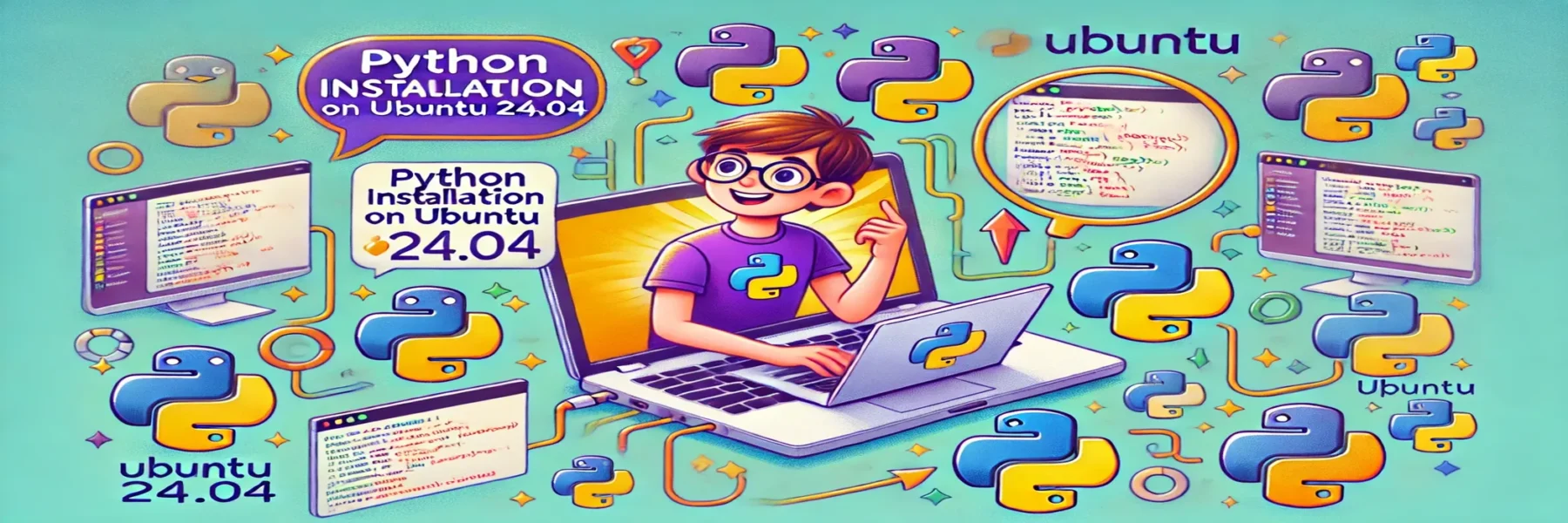Python is a versatile programming language widely used for web development, data analysis, machine learning, and more. If you’re using Ubuntu 24.04, installing Python is straightforward and can be completed in a few steps. This guide provides a comprehensive walkthrough on installing Python on Ubuntu 24.04, along with advanced tips, tricks, and frequently asked questions.
Getting Started with Python Installation on Ubuntu 24.04: Step-by-Step Guide
1. Check Python Installation
Before proceeding with the installation, check if Python is already installed:
python3If Python is installed, this command will display the Python version. If not, you will see an error message like command not found.
2. Installing Python on Ubuntu 24.04
There are three methods to install Python: using the default package manager (APT), from source code, or using the Deadsnakes PPA.
2.1. Installing Python Using Default Package Manager (APT)
This is the simplest method but may not provide the latest version:
sudo apt update
sudo apt install python3python3 --version2.2. Installing Python Using Deadsnakes PPA
Use this method for the latest versions:
sudo apt update
sudo apt install software-properties-common
sudo add-apt-repository ppa:deadsnakes/ppa
sudo apt update
sudo apt install python3.12
python3.12 --version2.3. Installing Python Using Source Code
For the newest version, compile from source:
sudo apt update
sudo apt install build-essential zlib1g-dev libncurses5-dev libgdbm-dev libnss3-dev libssl-dev libreadline-dev libffi-dev wget
cd /tmp
wget https://www.python.org/ftp/python/3.12.4/Python-3.12.4.tgz
tar -xf Python-3.12.4.tgz
cd Python-3.12.4
./configure --enable-optimizations
sudo make install
python3 --versionYou can obtain the most up-to-date version of Python from the official Python website.
3. Upgrade Installed Python Version
To upgrade Python, first check your current version:
python3 --versionIf installed via APT or Deadsnakes PPA, run:
sudo apt install python3For source installations, follow the source code method to download and compile the latest version.
Advanced Tips and Tricks for Python on Ubuntu 24.04
1. Creating a Virtual Environment
Manage dependencies without affecting the system-wide Python installation:
python3.12 -m venv myenv
source myenv/bin/activate2. Using Pip for Package Management
Pip is included by default with Python 3.12. Use pip to install packages:
pip install package-name3. Managing Multiple Python Versions
Manage multiple versions using:
sudo update-alternatives --install /usr/bin/python python /usr/bin/python3.12 14. Using Conda
Conda is a powerful package manager and environment manager:
conda install python=3.12Frequently Asked Questions (FAQs)
Q: Can I install multiple versions of Python on my system?
A: Yes, you can install multiple versions using the Deadsnakes PPA.
Q: How do I set the default version of Python?
A: Set the default version using the update-alternatives command:
sudo update-alternatives --install /usr/bin/python python /usr/bin/python3.12 1Q: How do I uninstall Python from my system?
A: Uninstall Python by running:
sudo apt remove python3.12Q: How to install pip for Python 3.12?
A: Install pip using the following command:
sudo apt install python3-pipQ: What if I need an older version like Python 3.8 or 3.11?
A: You can specify the version during installation, e.g., sudo apt install python3.8 or sudo apt install python3.11.
Q: How to use pip to install a specific version of a package?
A: Use the command pip install package-name==version, e.g., pip install numpy==1.19.5.
Q: Can I use Conda with Python 3.12?
A: Yes, you can manage Python versions and packages with Conda. Install it using conda install python=3.12.
Conclusion
Installing Python on Ubuntu 24.04 is a simple process that can be completed with a few commands. By following this guide and utilizing the tips and tricks provided, you can efficiently manage your Python installation and development environment. Whether you’re a beginner or an advanced user, mastering Python installation on Ubuntu 24.04 will enhance your programming experience.
For Mac users, check out our guide on installing Python 3.13 on Mac M1, M2, and M3.

